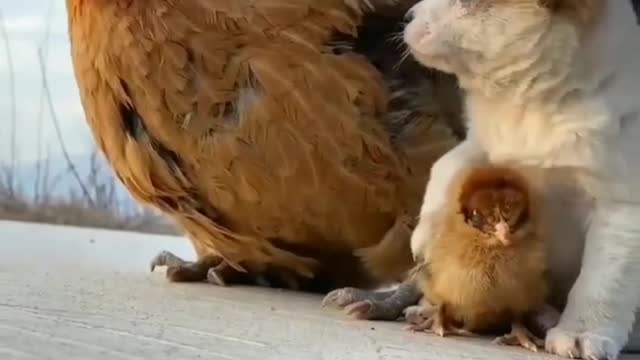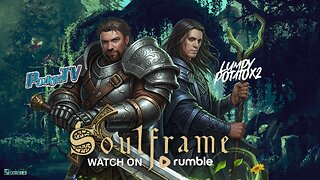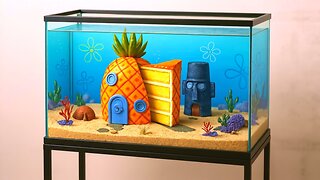Premium Only Content

Dog Care Tips: The Ultimate Pet Parent’s Guide by 🐕🐕🐶🐶🐶🐶
Pawlicy Advisor Logo
How pet insurance works
Is pet insurance worth it?
Why Pawlicy Advisor?
For veterinarians
Home
fetch@pawlicy.com
39 Dog Care Tips: The Ultimate Pet Parent’s Guide
by Aliyah Diamond
Pawlicy Advisor>Pet Care Blog>39 Dog Care Tips: The Ultimate Pet Parent’s Guide
If you're a pet parent (or soon to be one), these 35 dog care tips will cover everything you need to know when it comes to keeping your dog healthly and happy.
Whether you’ve just adopted a new puppy or you’ve had dogs your whole life, there's bound to be something in this list of dog care tips that you didn't know - but should.
As someone who's worked in animal hospirtals for 10+ years, and an avid #doglover, I promise this massive list of 39 dog care tips will help you be a better pet parent.
Here's what you'll find:
Dog health tips
Housekeeping and puppy-proofing
Exercise and mental stimulation
Bonding
Training
Winter care
Summer care
Dog safety
Dog Health Tips
1. Don't overfeed your dog, it will significantly impact their health and happiness
More than 50% of dogs in America are obese and this number is on the rise. Overweight dogs are at increased risk of metabolic abnormalities, cardiovascular disease, joint diseases, a lowered immune system, and many other health problems. They also are less mobile and can’t run, play, or do other activities as much as they’d like. Do your pet a favor, feed them the amount recommended by their vet and don’t give in to those puppy dogs eyes when they ask for more!
2. Touch your dog’s nose
Your dog’s nose should feel wet. The level of moisture will vary between dogs and by time of year, but a healthy dog will have a cool and slightly wet nose because dogs secrete sweat through their nose to cool down.
3. Make annual vet appointments
Let the experts examine your dog regularly to screen them for any health issues and to provide you with the best, personalized information to keep your precious pup healthy for many years.
4. Make a "pet first aid" kit
Accidents and emergencies happen and being prepared with all the essentials to help your dog is a crucial step in being a responsible pet owner. This is especially important if you take your dog out hiking or camping, whenever you may be far away from help. A DIY pet first aid kit is something every dog parent should have.
5. Get pet insurance
Emergency and unexpected accidents and illnesses often cost $800 to $1500. With as many as a third of pets needing emergency care per year, this can quickly become a financial burden. Pet insurance can help to cover these unexpected costs, prescription medications, long term health conditions and more, making it an important investment for the furry members of your family.
dog-costs-of-treatmentPro Tip: Explore the pet insurance marketplace on Pawlicy Advisor.)
6. Brush your dog’s teeth
Brushing your dog’s teeth is often overlooked, but hugely important to their overall health and avoiding expensive dental treatments in the future. Make this a part of their normal routine and make sure to use a toothpaste made specifically for dogs. With a little bit of time and training, teeth brushing can be a fun activity for your pet every day!
7. Have an emergency plan in place
It’s not pleasant to think about, but it’s crucial that you have a plan for your dog in place should anything happen to you. Make a list of important information about your dog’s lifestyle including how often they’re fed, how much they’re fed, medications, their vet’s phone number, etc. Give copies of this to someone in your life that could take care of your dog in the case of an emergency. It’s also worth your time to ask around and make sure you have at least one or two people who live close-by that could help your dog on short notice.
8. Play with Purpose
When petting and playing with your dog, especially when they are young, intentionally play with their feet, ears, and mouth. By doing things like touching their feet, toes and nails during positive play experience, you will desensitize them to being touched in these areas when its time for nail trims. Looking in their ears and mouth and getting them used to being handled in this way will make it much easier for your vet to examine your dog when they go in for check ups. This will make your vet’s job easier, your pup will be less stressed during their exam, and your vet will be more likely to catch any abnormalities in the event that there is something wrong with your dog.
Housekeeping and puppy-proofing
9. Keep your trash secured
Dogs are drawn to the delicious smell of your trash and may eat things that are toxic, harmful, or not digestible , so make sure your trash is secure. Ingestion of foreign objects or toxic substances could lead to costly emergency surgeries.
10. Give your dog a safe space
Have a temperate area of your home with your dog’s bed or blanket, some toys, and a water bowl, where your dog feels safe and can easily take naps during the day. This can help your dog to self-soothe during stressful situations, like parties, a baby crying, or thunderstorms. If your dog was crate trained as a rescue puppy or when joining your family, keeping their crate open and available even after they no longer need it for training may provide them with a perfect place just for them that they’ll love to have.
11. Lock up household toxins
Always keep your household chemicals, such as cleaners and pesticides, out of reach from your dog. Many clever dogs can and will get into products kept under the sink or in the garage. Try using baby proof locks to seal cabinets with toxic products.
12. Regularly wash your dog’s things
Germs, dirt, pollen, and more end up on your dog’s bedding, soft toys, and blankets. Make sure you’re washing these items weekly to keep them fresh and clean for your dog. If your dog suffers from seasonal allergies, this can be especially helpful in reducing their pollen exposure.
13. Keep your dog away from human food
Many human foods, such as chocolate, avocados, or onions, are toxic to dogs and can have serious ramifications to their health. Keep human food out of reach and be especially careful with gum and candies, as many contain xylitol which is a sugar-like substance toxic to dogs. Don’t feed your dog human foods on purpose unless recommended by your veterinarian. Some human foods, like plain chicken, canned pumpkin, or plain rice may be recommended intentionally by your vet for specific reasons such as digestive upset, diarrhea, to help hide oral medication or as highly motivating training treats in small quantities. In these instances “human food” may be appropriate for your dog, but they certainly don’t need to lick your dinner plate clean or eat your leftovers.
PRO TIP: For a comprehsive checklist of everything you need to "puppy-proof" your home, download the free puppy checklist.
Exercise and Mental Stimulation
14. Walk your dog for both their health and happiness
Regular walks provide many benefits for your dog, including preventing boredom, helping the digestive tract, keeping them at a healthier weight, and helping them to burn off excess energy. By giving them a constructive outlet, you may find bad behaviors, like chewing, barking or digging, decrease too.
15. Fight boredom by adding variety
Break up your dog’s normal routine by adding in extra walks or outings. Take them to a dog-friendly place or drive-in for a change of scenery. Take them on errands with you and switch up their toys to keep them mentally stimulated.
16. Challenge your dog mentally
Just like us, dogs need plenty of mental stimulation to stay happy and healthy. Give your dog a puzzle toy, teach them new tricks, and play new games with them to keep them engaged. Puzzle toys are a fantastic way to give your dog something fun to do when you can’t devote 100% of your attention to them.
PRO TIP: This is extra important while social-distancing with your dog.
17. Slowing down a super eater
If your dog or puppy eats their meals very quickly they increase their risk of having stomach issues or upsets that may lead to vomiting. Slowing down your dog’s eating is good for their digestive health and can be done easily. One option is to buy a puzzle feeder from a pet store or online. Alternatively, a cheap easy solution is just to put a large tennis ball in their bowl. Both the ball or puzzle toy will work similarly making your dog have to work around the inedible obstacle to eat their meal.
18. Exercise together
Race your dog in the park, try dog yoga, climb stairs with your dogs, or take them on an adventurous hike. You’ll both reap the benefits of exercise as you have fun together.
Bonding
19. Be a friend to your dog
Dogs need love and affection to thrive. Make sure they’re spending plenty of time inside with you and your family. Give them attention, treats, and play games with them.
20. Have patience with them
It can be challenging when your dog acts out or isn’t picking up on a new training technique, but with some grace and patience, they’ll be more likely to continue trying. If you’re feeling frustrated, take a break from training and consider consulting your vet or local training professional. Dogs are very good at reading our body language and won’t respond well to training if you are tense or angry.
21. Hang out with them while they eat
Dogs are by nature pack animals and you’re their pack. Stay near them when they eat and make this an ongoing communal act. Picky eaters might also show more interest in their food when they see you take an interest.
Training
22. Applaud your pet when they successfully relieve themselves outside
Potty training can be difficult, especially with stubborn dog breeds. Applaud and cheer your dog on when they go outside and do their business every time and they’ll eagerly continue this behavior until it becomes a habit. For dogs who are learning to be house-trained, bring treats outside with you and immediately reward your dog after they finish peeing or pooping somewhere you approve of. If you do this every time, and take your puppy out frequently enough (including after every meal, after every drink of water, and at least every 4-6 hours) house breaking will be significantly easier.
-

sophiesnazz
3 hours agoTIME TO WIND PEOPLE UP !socials
13.1K1 -

GamerGril
4 hours agoDoom Gal Bingo The Finale | Special Boss Bingo
10.5K5 -
 2:22:46
2:22:46
The Connect: With Johnny Mitchell
1 day ago $16.52 earnedOne Man's Mission To Stop Human Trafficking: How A Billionaire Mercenary Saved Hundreds Of Children
67.8K41 -

FoeDubb
4 hours ago🏰KINGDOM MENU:🌳SESHYS & 🎮WITCHER 3 VIBES ON DECK DILLY DILLY!!!
9.2K2 -
 28:43
28:43
Liberty Hangout
4 days agoAnti-Trumpers Don't Know What They're Protesting
64.7K252 -
 LIVE
LIVE
PudgeTV
1 day ago🟠 Gaming on Rumble | Soulframe Early Access Gaming Showcase
117 watching -
 LIVE
LIVE
itsReel
5 hours agoGaming SUNDAY
49 watching -
 20:33
20:33
Sideserf Cake Studio
1 day ago $4.93 earnedI Built A Bikini Bottom Fish Tank CAKE!
53.2K13 -
 LIVE
LIVE
XxXAztecwarrior
5 hours agoPlaying Normals Big Red Hunting Delta Force
49 watching -
 16:24
16:24
Forrest Galante
20 hours ago6 Deadliest Man Eaters to Ever Exist
90.1K23